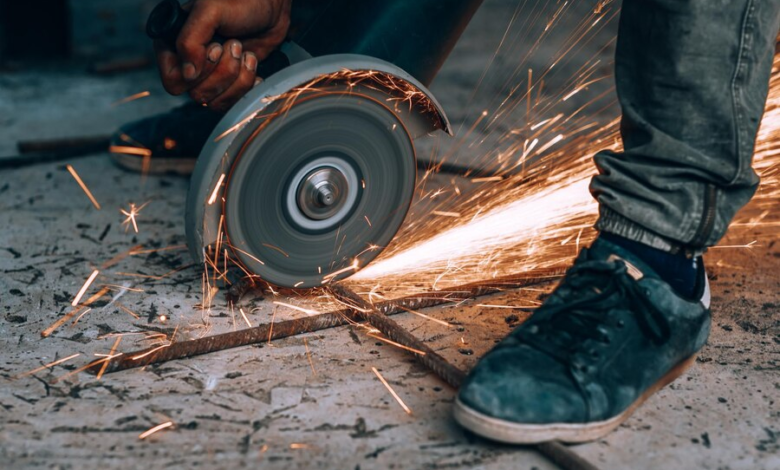Mastering Precision with Diamond Sharpening Wheels: Elevating Tool Sharpening to Unprecedented Levels of Accuracy

In the realm of tool maintenance and restoration, precision is paramount. Whether it’s woodworking tools, kitchen knives, or industrial cutters, achieving razor-sharp edges is essential for optimal performance. Diamond sharpening wheels have emerged as the go-to solution for mastering precision in tool sharpening. These innovative tools harness the unparalleled hardness of diamonds to elevate sharpening to unprecedented levels of accuracy. In this article, we delve into the world of diamond sharpening wheels, exploring their capabilities and techniques for achieving razor-sharp edges with precision and consistency.
Understanding Diamond Sharpening Wheels
Diamond sharpening wheels are abrasive tools designed for sharpening a variety of cutting implements, including knives, chisels, scissors, and more. Unlike traditional sharpening stones or wheels, which may use natural or synthetic abrasives like aluminum oxide or silicon carbide, diamond sharpening wheels utilize industrial-grade diamonds embedded in a metal or resin matrix.
Diamonds are renowned for their exceptional hardness and durability, making them ideal for sharpening even the toughest tool steels and alloys. The rigid structure of diamond abrasives ensures consistent cutting performance and extended wheel life, allowing for precise and efficient sharpening over time.
Advantages of Diamond Sharpening Wheels
Diamond sharpening wheels have emerged as the go-to solution for mastering precision in tool sharpening, offering a blend of durability, consistency, and efficiency that sets them apart from traditional abrasive tools. Let’s explore the unparalleled advantages of diamond sharpening wheels and their transformative impact on tool sharpening processes.
- Unmatched Hardness and Wear Resistance: Diamond sharpening wheels offer unparalleled hardness and wear resistance, allowing them to maintain sharp cutting edges even when sharpening highly abrasive materials. This durability ensures long-lasting performance and reduces the frequency of wheel replacement.
- Consistent Cutting Performance: The uniform distribution of diamond abrasives in the wheel matrix ensures consistent cutting performance across the entire sharpening surface. This consistency results in uniform edge geometry and minimizes the risk of uneven sharpening or overgrinding.
- Versatility Across Materials: Diamond sharpening wheels are capable of sharpening a wide range of materials, including steel, ceramic, and carbide. Their versatility makes them suitable for sharpening various cutting implements used in woodworking, metalworking, culinary arts, and beyond.
- Precision Sharpening: The hardness and fine grit size of diamond abrasives enable precise control over the sharpening process, allowing for the refinement of edge angles and the removal of minimal material. This precision ensures razor-sharp edges with minimal effort and reduces the likelihood of edge chipping or damage.
- Minimal Heat Generation: Diamond sharpening wheels generate less heat during sharpening compared to conventional abrasive wheels, reducing the risk of thermal damage to the tool being sharpened. This is particularly beneficial for heat-sensitive materials or tools with hardened steel components.
Techniques for Mastering Precision with Diamond Sharpening Wheels
Diamond sharpening wheels have revolutionized the sharpening process, offering unmatched hardness and durability for achieving razor-sharp edges. Here, we explore the essential techniques for mastering precision with diamond sharpening wheels, unlocking the secrets to elevating tool sharpening to unprecedented levels of accuracy.
- Selecting the Right Grit Size: Choose the appropriate grit size of diamond sharpening wheel based on the tool material and the desired edge finish. Coarser grit sizes are suitable for initial sharpening or repairing damaged edges, while finer grit sizes are ideal for honing and refining the edge.
- Maintaining Consistent Pressure and Angles: Apply consistent pressure and maintain steady sharpening angles throughout the sharpening process to ensure uniform edge geometry. Use sharpening guides or jigs to maintain precise angles, especially for tools with specific bevel requirements.
- Progressive Sharpening Steps: Start with a coarser grit diamond sharpening wheel to establish the initial edge geometry, then progress to finer grit wheels for honing and polishing the edge. This progressive sharpening approach ensures a smooth transition between grit sizes and maximizes edge sharpness.
- Cooling and Lubrication: Use water or a water-based sharpening fluid as a coolant and lubricant during sharpening to dissipate heat and flush away debris. This helps prevent heat buildup and minimizes the risk of thermal damage to the tool and the diamond sharpening wheel.
- Regular Wheel Maintenance: Periodically clean and dress diamond sharpening wheels to remove debris buildup and maintain wheel flatness. Diamond wheel dressers or dressing stones can be used to restore the cutting surface of the wheel and ensure optimal sharpening performance.
Applications of Diamond Sharpening Wheels
Diamond sharpening wheels find application across various industries and sectors, including:
- Woodworking: In woodworking shops, diamond sharpening wheels are used to sharpen hand tools such as chisels, plane irons, and gouges, as well as power tool accessories like router bits and saw blades.
- Metalworking: In metal fabrication and machining, diamond sharpening wheels are utilized for sharpening cutting tools, drills, end mills, and lathe tools, ensuring precise cutting performance and extended tool life.
- Culinary Arts: In commercial kitchens and culinary schools, diamond sharpening wheels are employed to sharpen kitchen knives, ensuring razor-sharp edges for slicing, dicing, and chopping tasks.
- Craftsmanship: In artisanal crafts and hobbies, diamond sharpening wheels are used to sharpen a variety of hand tools, including scissors, carving knives, and engraving tools, allowing craftsmen to achieve intricate and precise cuts.
- Industrial Manufacturing: In industrial settings, diamond sharpening wheels play a crucial role in maintaining the sharpness of cutting implements used in manufacturing processes, ensuring efficient production and quality control.
Conclusion
Diamond sharpening wheels represent the pinnacle of precision and efficiency in tool sharpening, offering unmatched hardness, durability, and cutting performance. By harnessing the unique properties of industrial-grade diamonds, these innovative tools elevate sharpening to unprecedented levels of accuracy and consistency. With proper techniques and maintenance, manufacturers, craftsmen, and hobbyists can master precision sharpening with diamond sharpening wheels, ensuring razor-sharp edges and optimal tool performance across a wide range of applications. As the demand for precision machining and tooling continues to grow, diamond sharpening wheels stand poised to remain indispensable tools in the arsenal of every craftsman and manufacturer striving for excellence.


